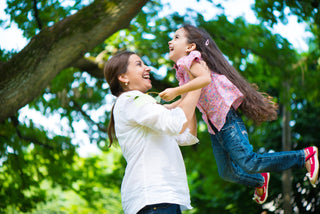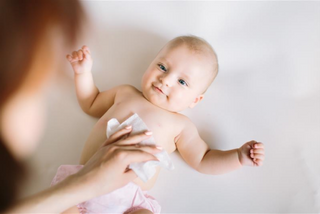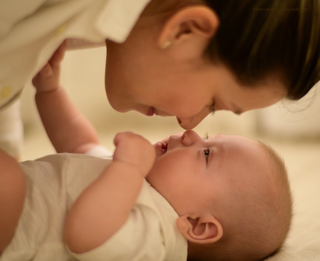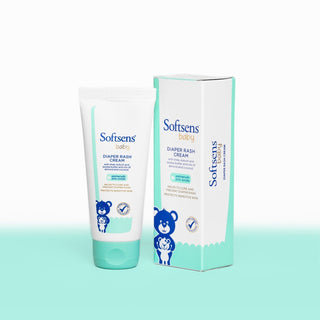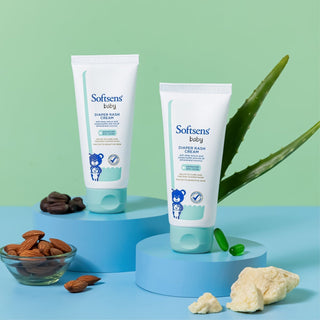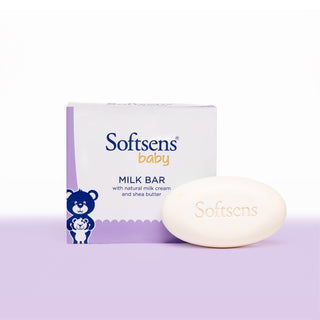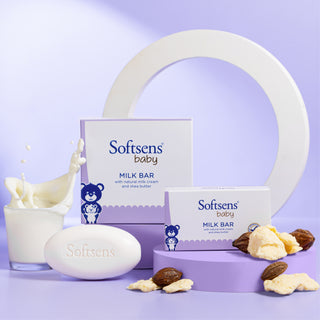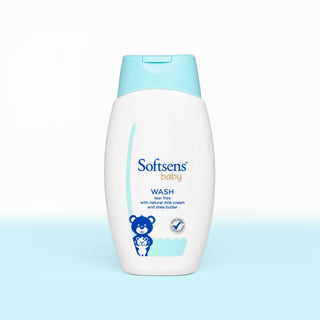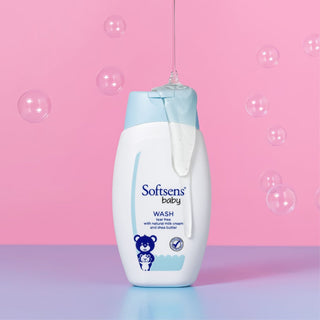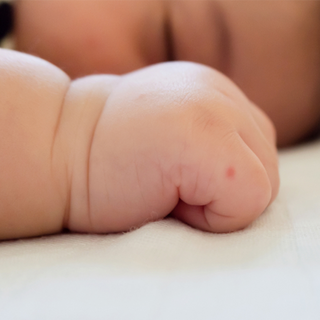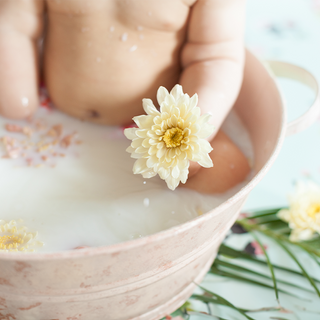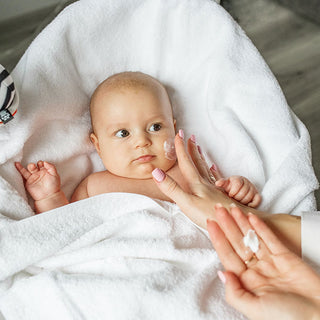
Uh oh, diaper rash! That red, bumpy surprise on your baby's bottom can be distressing for both you and your precious one. But don't worry, you're not alone! Diaper rash is very common, and the good news is, with a little TLC, it usually clears up within a few days.
This comprehensive guide dives deep into everything you need to know about diaper rash, including:
-
Understanding Diaper Rash: Causes and Symptoms
-
Symptoms of Diaper Rash
-
Preventing Diaper Rash: Keeping Your Baby Comfortable
-
Treating Diaper Rash: Soothing Your Baby's Discomfort
-
Home Remedies and Additional Tips
-
When to See a Doctor: Seeking Medical Attention
-
Keeping Your Baby Happy and Rash-free
Understanding Diaper Rash: Causes and Symptoms
Diaper rash develops due to various factors irritating your baby's delicate skin. Here's a breakdown of the common culprits:
-
Skin Friction: Imagine wearing a tight-fitting outfit all day! Constant rubbing of the diaper against your baby's delicate skin can irritate it, just like rough clothes would irritate yours.
-
Moisture Wetness: Think of your skin getting wrinkly and soft after a long bath. Prolonged exposure to wetness from pee and poop breaks down the natural protective layer on your baby's skin. This vulnerable skin is more prone to irritation and inflammation, leading to diaper rash.
-
Yeast Infection: A fungus called Candida albicans loves warm, moist environments, just like the area under a diaper. When this fungus overgrows, it can cause diaper rash. Look out for additional symptoms like tiny red bumps (satellite papules) around the diaper area if this might be the culprit.
-
Bacterial Infection: Bacteria naturally live in your baby's gut, but sometimes they can irritate the skin, especially if there's diarrhea. Think of it like a little tummy trouble causing a big bottom problem!
-
Sensitivity Allergies: Just like some adults have sensitive skin, some babies do too. Products with alcohol, fragrances, or harsh chemicals in wipes or detergents can trigger allergic reactions or contact dermatitis, leading to diaper rash.
-
Food Allergies: Introducing solids can sometimes trigger a food allergy, which might appear as diaper rash. Keeping a food diary can help you identify the culprit if you suspect this is the case.
-
Antibiotics: Antibiotics are great fighters against bad bacteria, but sometimes they accidentally take out the good ones too. This disrupts the natural balance in your baby's gut, making them more susceptible to diaper rash.

Symptoms of Diaper Rash:
Diaper rash can vary in severity. Here are the signs to watch out for:
-
Mild Rash: Pinkish skin with slight bumps and dryness.
-
Moderate Rash: Red, scaly, and dry skin around the diaper area, including the legs and abdomen. Raised bumps may also be present.
-
Severe Rash: The rash appears raw, shiny, and red. There might be peeling, bleeding, or pus-filled bumps.

If your baby's diaper rash persists for more than 3-4 days, worsens, or you notice any of the following, consult your pediatrician immediately:
-
Pus-filled blisters
-
Yellow crusty skin
-
Widespread red spots beyond the diaper area
-
Fever
These signs might indicate a bacterial or yeast infection requiring a doctor's diagnosis and prescription medication.
Preventing Diaper Rash: Keeping Your Baby Comfortable
The best approach to diaper rash is prevention. Here are some key strategies to keep your baby's skin happy and healthy:
-
Frequent Diaper Changes: Change diapers every 2-3 hours, or more often after a bowel movement, to minimize wetness and exposure to stool.
-
Gentle Cleaning: Clean your baby's diaper area thoroughly with warm water and a gentle, fragrance-free baby wipe or washcloth. Pat the area dry thoroughly, especially between the folds of skin. Avoid rubbing, as this can further irritate the skin. (Our All-Natural Baby Wet Wipes and 99.9% Pure Water Wipes are both ideal for baby's sensitive skin)
-
Diaper Cream: Apply a thin layer of diaper rash cream at every diaper change to create a protective barrier against moisture irritation. Softsens Natural Diaper Rash Cream with zinc oxide is perfect for use at every diaper change to prevent rashes and irritation.
-
Diaper Choice:Choose diapers that fit well without being too tight. Opt for fragrance-free and breathable diapers that allow for airflow.
-
Diaper-Free Time: Whenever possible, allow your baby diaper-free time to air out their skin. Lay them on a waterproof surface to avoid messes. This promotes healing and reduces irritation.
-
Identify Eliminate Irritants: Pay attention to any changes in your baby's routine that might coincide with diaper rash. Consider factors like new diaper brands, wipes, laundry detergents, or even recent food introductions if your baby has started solids.

Treating Diaper Rash: Soothing Your Baby Discomfort
If your baby develops diaper rash, fear not. Here's your action plan to treat diaper rash and get your little one feeling comfy again:
-
Diaper Duty: Up the Ante! Think of this as a diaper-changing bootcamp! During a diaper rash episode, frequent changes are key. Aim to do this even more often than usual to minimize wetness and irritation. Every little change helps!
-
Gentle Cleaning: Use the gentlest products to clean baby's bottom or even a damp, warm washcloth. Harsh chemicals can further irritate the rash. Softsens 99.9% Pure Water Wipes are made from 99.9% purified water and 0.1% aloe vera extract, free from harmful chemicals and completely safe for babies with sensitive eczema prone skin. Remember, pat the area dry instead of rubbing we want to be super gentle!
-
Warm Bath Bonanza! Transform bath time into a soothing spa experience for your little one's bottoms. Fill the tub with warm (not hot!) water and let your baby soak for 10-15 minutes, a few times a day, especially if the rash is raw or inflamed. This warm bath is like magic for soothing discomfort and gently removing any leftover stool.
-
Diaper Rash Cream: Layer Up for Protection! Think of diaper rash cream as a superhero cape protecting your baby's delicate skin. Apply a thicker layer of cream with every diaper change and cleaning. Zinc oxide ointments are great choices for most diaper rashes. Formulated with zinc oxide and 6 natural ingredients, Softsens Baby Natural Diaper Rash Cream soothes irritation and protects your baby's sensitive skin.
-
Operation: Bare Bottom! Give your baby's skin some breathing room! Maximize diaper-free time whenever possible. This allows the rash to heal faster. Just remember to lay down a waterproof sheet on your baby's crib to avoid any messy surprises.
By following these steps and showering your little one with love (and maybe a soothing song!), you can banish diaper rash and get those happy baby giggles back in no time!

Home Remedies and Additional Tips
Some parents find relief with home remedies for diaper rash. However, it's crucial to consult your pediatrician before trying any of these methods:
-
Coconut Oil: Virgin coconut oil has anti-inflammatory and antimicrobial properties that may soothe diaper rash. Apply a thin layer after cleaning and drying the area.
-
Breast Milk: The natural anti-inflammatory properties in breast milk might offer some relief. Apply a small amount to the affected area after consulting your pediatrician.
-
Apple Cider Vinegar: Dilute apple cider vinegar with water (1 part vinegar to 10 parts water) and use a cotton ball to dab it on the affected area. Patch test on a small area first to check for allergies.
Important Note:
While these home remedies may be helpful for some babies, it's important to remember they are not a substitute for proper medical care. If your baby's diaper rash worsens or doesn't improve within a few days of using home remedies, consult your pediatrician.
When to See a Doctor: Seeking Medical Attention
While most diaper rashes clear up with home care within a few days, there are situations where seeking medical attention is essential. Here are some red flags to watch out for:
-
Severe Rash: A severe rash appears raw, shiny, and red with bleeding or pus-filled bumps.
-
Persistent Rash: If the rash doesn't improve within 3-4 days of consistent home care.
-
Fever: A fever accompanying the diaper rash might indicate an underlying infection.
-
Signs of Yeast or Bacterial Infection: Look out for additional symptoms like satellite papules (small, red bumps) or pus-filled blisters.
-
Baby Seems Uncomfortable: If your baby seems distressed or cries excessively during diaper changes, consult your doctor.
Your pediatrician can diagnose the cause of the diaper rash and recommend the most appropriate treatment, which might include prescription medications like antifungal creams or antibiotics.
Keeping Your Baby Happy and Rash-free

While diaper rash is a phrase no parent wants to hear, the truth is can be a common battle in the early years. The good news? With a little knowledge and these helpful tips, you can effectively manage diaper rash and keep your little one comfortable. By understanding the causes (friction, moisture, and sneaky yeast!), implementing preventative measures (hello, frequent diaper changes!), and following effective treatment protocols (zinc oxide cream, warm soaks, and diaper-free time), you can keep your little one comfortable and their bottom happy.
By following these guidelines and staying informed, you can ensure your baby's comfort and well-being throughout this common childhood experience. Remember, early intervention is key! Don't hesitate to consult your pediatrician if you have any concerns. Happy Diapering!






